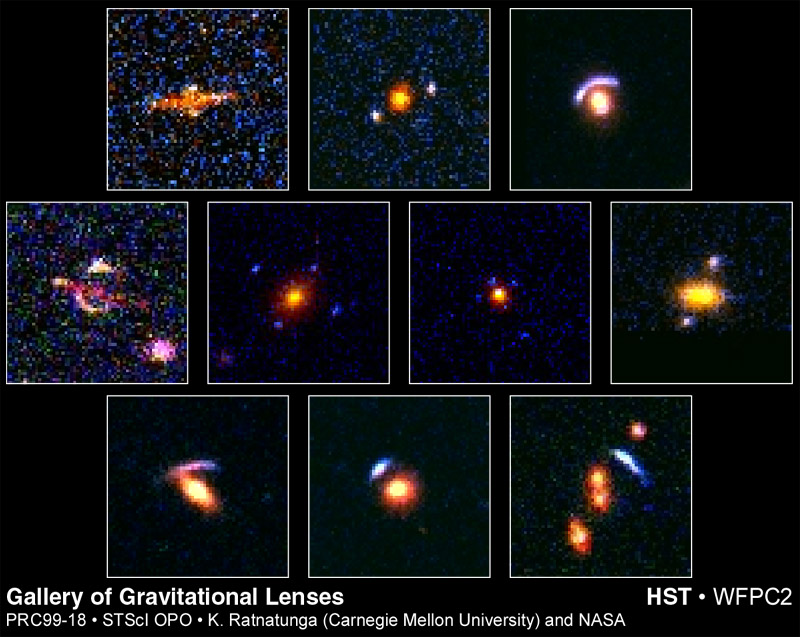


Ajánlott linkek:
Magányosan vándorló fekete lyukak - http://www.origo.hu/tudomany/vilagur/20000203maganyosan.html
A Supernova szakkör összefoglalója - http://supernova.akg.hu/htema/februar/htema.html
Barna törpe csillagok mint gravitációs lencsék - http://www.jate.u-szeged.hu/obs/ismeret/gravlens/evk1995.html
Az Univerzum sötét anyagának térképe - http://www.origo.hu/tudomany/vilagur/20000317elkeszult.html
Legújabb eredmények az OGLE-II és a MACHO megfigyelési
programból:
(http://xxx.lanl.gov/list/astro-ph/0002418)
Title: The Optical Gravitational Lensing
Experiment. Catalog of Microlensing Events in the Galactic Bulge
Authors: A. Udalski, K. Zebrun, M. Szymanski,
M. Kubiak, G. Pietrzynski, I. Soszynski, P. Wozniak
Comments: 25 pages, Latex+psfig. Only two
pages of Appendix are included. Submitted to Acta Astronomica.
We present the Catalog of microlensing events
detected toward the Galactic bulge in three observing seasons,
1997-1999, during the OGLE-II microlensing
survey. The search for microlensing events was performed using a
database of about 4*10^9 photometric measurements
of about 20.5 million stars from the Galactic bulge. The Catalog
comprises 214 cases of microlensing events
found in the fields covering about 11 square degrees on the sky and
distributed in different parts of the Galactic
bulge. The sample includes 20 binary microlensing events, 14 of them are
caustic crossing. In one case a double star
is likely lensed.
We present distribution of the basic parameters
of microlensing events and show preliminary frequency of microlensing in
different regions of the Galactic bulge. The
latter reveals clear dependence on the Galactic coordinates. The dependence
on 'l' indicates that the majority of lenses
toward the Galactic bulge are located in the Galactic bar. Models of the
Galactic bar seem to reasonably predict the
observed spatial distribution of microlensing events in the Galactic bulge.
All data presented in the Catalog and photometry
of all events are available from the OGLE Internet archive. (248kb)
Azaz: 1997-1999 között a Tejútrendszer centruma irányában az égbolt
11 négyzetfoknyi területét vizsgálták. 20,5 millió
csillagról 4000 millió fényességmérést végeztek. 214 háttér-csillag
felfényesedést találtak, amit gravitációs mikrolencse hatás
okozott. Ezek között 20 esetben a lencse-csillag kettős volt. Egy esetben
valószínűleg a háttér-csillag volt kettős.
Részletek és a fénygörbék: http://www.astrouw.edu.pl/~ogle
(http://xxx.lanl.gov/list/astro-ph/0002510)
Title: The MACHO project: Microlensing Optical Depth towards
the Galactic Bulge from Difference Image Analysis
Authors: C. Alcock, R. A. Allsman, D. R. Alves, T. S. Axelrod,
A. C. Becker, D. P. Bennett, K. H. Cook, A. J.
Drake, K. C. Freeman, M. Geha, K. Griest, M. J. Lehner, S.
L. Marshall, D. Minniti, C. A. Nelson, B. A. Peterson, P.
Popowski M. R. Pratt, P. J. Quinn, C. W. Stubbs, W. Sutherland,
A. B. Tomaney, T. Vandehei, D. L. Welch
Comments: 43 pages, 11 figures (26files), 8 tables, uses
astrobib.sty, submitted to ApJ
We present the microlensing optical depth
towards the Galactic bulge based on the detection of 99 events found in
our
Difference Image Analysis (DIA) survey. This
analysis encompasses three years of data, covering ~ 17 million stars in
~
4 sqdeg, to a source-star baseline magnitude
limit of V = 23. The DIA technique improves the quality of photometry in
crowded fields, and allows us to detect more
microlensing events with faint source stars. We find this method increases
the number of detection events by 85% compared
with the standard analysis technique. DIA light curves of the events
are presented and the microlensing fit parameters
are given. The total microlensing optical depth is estimated to be
tau(total)= 2.91(+0.47/-0.45) x 10^(-6) averaged
over 8 fields centered at l=2.68 deg and b= -3.35 deg. For the bulge
component we find tau(bulge) = 3.88(+0.63/-0.60)
x 10^(-6) assuming a 25% contribution from disk microlensing
events. These optical depths are in good agreement
with the past determinations of the MACHO Alcock et al. (1997a)
and OGLE Udalski et al. (1994) groups, and
are significantly higher than predicted by contemporary Galactic models.
We show that the short end of microlensing
event timescale distribution is compatible with that expected from the
mass
distribution of normal stars. We thus find
no evidence for the existence of a large population of brown dwarfs in
the
direction of the Galactic bulge. (498kb)
Azaz: Három év alatt a Tejútrendszer centruma irányában az égbolt 4
négyzetfoknyi területét vizsgálták. 17 millió csillagról V=23 magnitudóig
végeztek fényességmérést. 99 háttér-csillag felfényesedést találtak, amit
gravitációs mikrolencse hatás okozott. Nincs arra mutató jel, hogy barna
törpék nagy számban lennének a centrum irányában.
Részletek és a fénygörbék: http://wwwmacho.mcmaster.ca
Szatmáry Károly